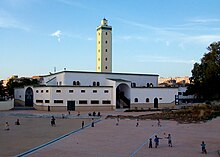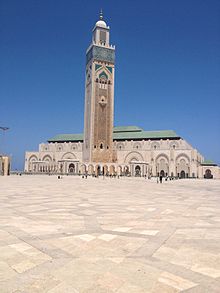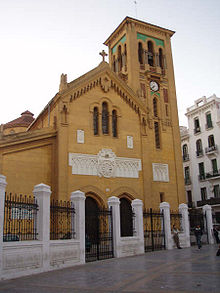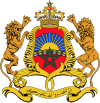The constitution of Iran states that the country is an Islamic republic; it specifies Twelver Ja’afari Shia Islam as the official state religion.
Religion in Africa is multifaceted and has been a major influence on art, culture and philosophy. Today, the continent's various populations and individuals are mostly adherents of Christianity, Islam, and to a lesser extent several traditional African religions. In Christian or Islamic communities, religious beliefs are also sometimes characterized with syncretism with the beliefs and practices of traditional religions.

Islam is the majority religion in Azerbaijan, but the country is considered to be the most secular in the Muslim world. Estimates include 97.3% and 99.2% of the population identifying as Muslim. Of these, a majority belong to the Shia branch (55-65%), while a significant minority (35-45%) are Sunni. Traditionally, the differences between these two branches of Islam have not been sharply defined in Azerbaijan.
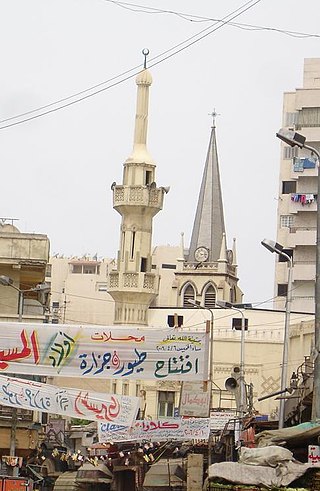
Religion in Egypt controls many aspects of social life and is endorsed by law. The state religion of Egypt is Islam, although estimates vary greatly in the absence of official statistics. Since the 2006 census religion has been excluded, and thus available statistics are estimates made by religious and non-governmental agencies. The country is majority Sunni Muslim, with the next largest religious group being Coptic Orthodox Christians. The exact numbers are subject to controversy, with Christians alleging that they have been systemically under-counted in existing censuses.

Christians in Morocco constitute less than 1% of the country's population of 33,600,000. Most of the Christian adherents are Catholic and Protestants.

Religion in Ethiopia consists of a number of faiths. Among these mainly Abrahamic religions, the most numerous is Christianity totaling at 67.3%, followed by Islam at 31.3%. There is also a longstanding but small Ethiopian Jewish community. Some adherents of the Baháʼí Faith likewise exist in a number of urban and rural areas. Additionally, there is also a substantial population of the adherents of traditional faiths.
Growth of religion involves the spread of individual religions and the increase in the numbers of religious adherents around the world. In sociology, desecularization is the proliferation or growth of religion, most commonly after a period of previous secularization. Statistics commonly measure the absolute number of adherents, the percentage of the absolute growth per-year, and the growth of converts in the world.

The Arab world consists of 22 states. As of 2021, the combined population of all the Arab states was around 475 million people.
For approximately a millennium, the Abrahamic religions have been predominant throughout all of the Middle East. The Abrahamic tradition itself and the three best-known Abrahamic religions originate from the Middle East: Judaism and Christianity emerged in the Levant in the 6th century BCE and the 1st century CE, respectively, while Islam emerged in Arabia in the 7th century CE.

Religion in Algeria is dominated by Muslims, with nearly ninety-eight of the population adhering to Sunni Islam of the Maliki school of jurisprudence, as of 2020. The remainder include other Islamic schools and branches, Christian denominations, Baháʼís and Jews. Estimates of the Christian population range from 71,000 to 200,000. The latest available estimates suggest a Baháʼí population of 3,300, and a Jewish community of less than 200 people.
Religion in Iran has been shaped by multiple religions and sects over the course of the country's history. Zoroastrianism was the main followed religion during the Achaemenid Empire, Parthian Empire, and Sasanian Empire. Another Iranian religion known as Manichaeanism was present in Iran during this period. Jewish and Christian communities thrived, especially in the territories of northwestern, western, and southern Iran—mainly Caucasian Albania, Asoristan, Persian Armenia, and Caucasian Iberia. A significant number of Iranian peoples also adhered to Buddhism in what was then eastern Iran, such as the regions of Bactria and Sogdia.
According to various polls, the majority of Kazakhstan's citizens, primarily ethnic Kazakhs, identify as Sunni Muslims. In 2020, Shia Muslims made up 0.55% of the population.

Islam is the dominant religion in Libya.
The Constitution of Bahrain states that Islam is the official religion and that Shari'a is a principal source for legislation. Article 22 of the Constitution provides for freedom of conscience, the inviolability of worship, and the freedom to perform religious rites and hold religious parades and meetings, in accordance with the customs observed in the country; however, the Government has placed some limitations on the exercise of this right.
Of the religions in Tunisia, Islam is the most prevalent. It is estimated that in 2022, approximately 99% of Tunisia's inhabitants identified themselves as Muslims.

Christianity is the largest religion in Mozambique, with substantial minorities of the adherents of traditional faiths and Islam.
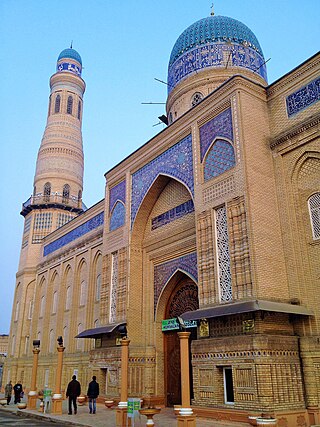
Islam is the predominant religion in Uzbekistan.
Islam is the majority and official religion in the United Arab Emirates, professed by approximately 76% of the population.The Al Nahyan and Al Maktoum ruling families adhere to Sunni Islam of Maliki school of jurisprudence. Many followers Hanbali school of Sunni Islam are found in Sharjah, Umm al-Quwain, Ras al-Khaimah and Ajman. Their followers include the Al Qasimi ruling family. Other religions represented in the country including Christianity, Hinduism, Buddhism, Zoroastrians, Druze, Baha'i, Judaism, and Sikhism are practiced by non-nationals.
Religions in Karachi include Islam, Christianity, Hinduism, Sikhism, Buddhism, Zoroastrianism and others. According to a 1998 census of Pakistan, the religious breakdown of the city is as follows: Muslim (96.45%), Christian (2.42%), Hindu (0.86%), Ahmadis (0.17%) and other (0.10%). Other religious groups include Parsis, Sikhs, Baháʼí, Jews and Buddhists. Of the Muslims, approximately 66% are Sunnis and 34% are Shi'ites. The Sunnis follow Hanafi fiqh while Shi'ites are predominantly Ithnā‘Ashariyyah fiqh, with significant minority groups who follow Ismaili Fiqh, which is composed of Nizari, Mustaali, Dawoodi Bohra and Sulaymani fiqhs.
Freedom of religion in Morocco refers to the extent to which people in Morocco are freely able to practice their religious beliefs, taking into account both government policies and societal attitudes toward religious groups. The constitution declares that Islam is the religion of the state, with the state guaranteeing freedom of thought, expression, and assembly. The state religion of Morocco is Islam. The government plays an active role in determining and policing religious practice for Muslims, and disrespecting Islam in public can carry punishments in the forms of fines and imprisonment.
